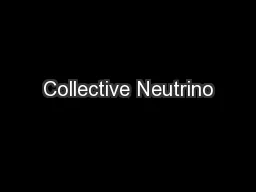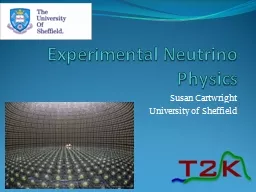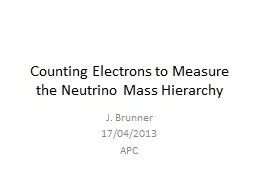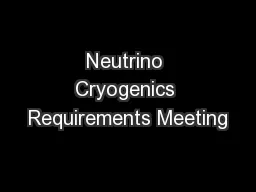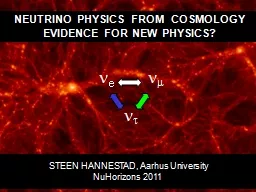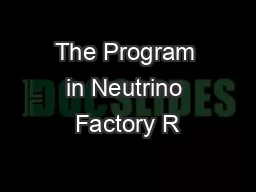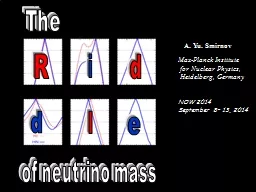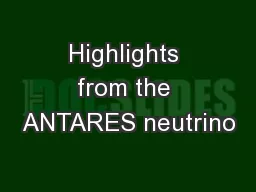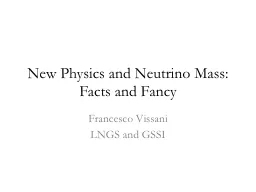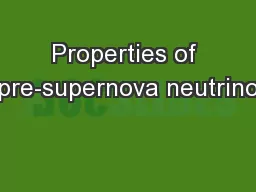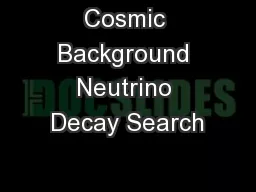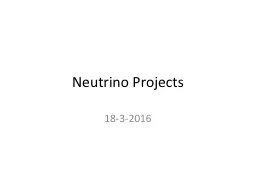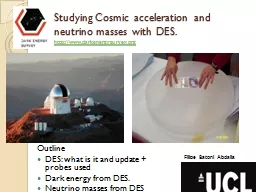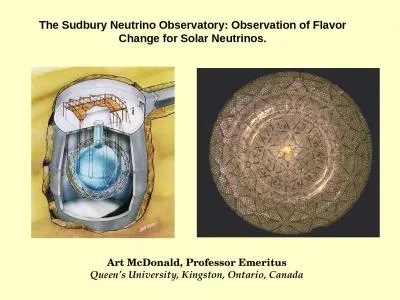PPT-Collective Neutrino
Author : olivia-moreira | Published Date : 2016-03-30
Oscillations Collective Neutrino Oscillations Georg G Raffelt 3 rd Schr ödinger Lecture Thursday 19 May 2011 Neutrino Oscillations in Matter 3300 citations Lincoln
Presentation Embed Code
Download Presentation
Download Presentation The PPT/PDF document "Collective Neutrino" is the property of its rightful owner. Permission is granted to download and print the materials on this website for personal, non-commercial use only, and to display it on your personal computer provided you do not modify the materials and that you retain all copyright notices contained in the materials. By downloading content from our website, you accept the terms of this agreement.
Collective Neutrino: Transcript
Download Rules Of Document
"Collective Neutrino"The content belongs to its owner. You may download and print it for personal use, without modification, and keep all copyright notices. By downloading, you agree to these terms.
Related Documents

